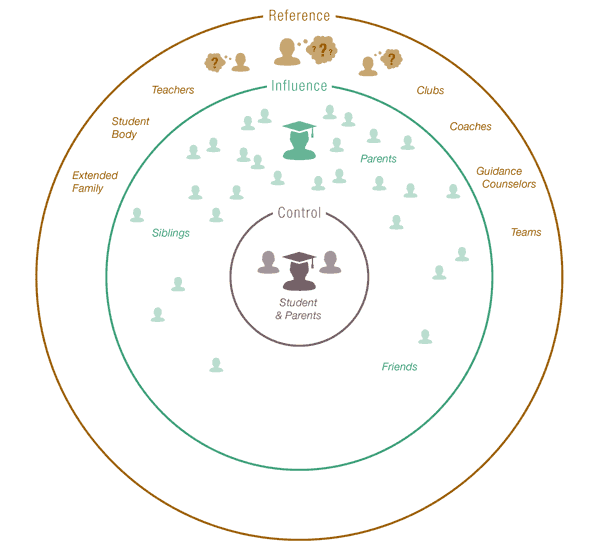A recovering economy and rising tuition costs have forced colleges and universities to demonstrate the ROI of a degree more than ever. Alumni have become a holy grail in the academic recruitment world, yet the bulk of the outreach to alumni is for donations.
There are a rising number of applications that mention the impact of alumni as the reason for applying to a particular college. If alumni are increasingly influencing student’s college choices, and are a key in demonstrating the value of a degree why aren’t more schools equipping this population to be evangelists’ for the school rather than simply asking for donations? A brand evangelist can produce more for your institution than a $50 donation.

The reason there is a gap in utilizing alumni in admissions is due to a lack of alignment. In many ways, schools are no different than business organizations in that there are different business units, or departments, that work in silos. This is simply a trait that grows over time. For colleges and universities, admissions, alumni, academics, and athletics are the silos that are typically held together by the marketing team or a single individual. There is simply too much to keep up with on an individual unit level that it makes it hard to see the forest through the trees. As a resulting alignment suffers and the alumni population is left underutilized in the admissions process.
Meanwhile, the number of high school graduates is expected to dwindle, but the diversity among those graduates is expected to grow. This means that colleges and universities have to fight harder for local students, while also marketing on a national or global level to reach a larger pool of students. All this to say the way universities are marketing themselves needs to change and alumni should be a key part.
Alumni provide institutions an opportunity to make personal connections with prospective students who may identify better with the individual alumni than the institution itself.
Guidance counselors, once an important influencer in the yielding process, have experienced a shift in job roles. A study of 806 middle schools and 2,084 high school counselors revealed that roughly 70 percent of high school counselors state being tasked with clerical duties; another 60 percent include test coordination as the main job responsibility. This leaves very little time to help students and their parents navigate through the intricate process of finding, applying, and choosing a school.

Higher Ed institutions will need to think differently about their brand and route to market as competition heats up for a shrinking and changing group of high school graduates. Clever universities will find ways to create alignment among a shifting set of influencers from guidance counselors to alumni.
